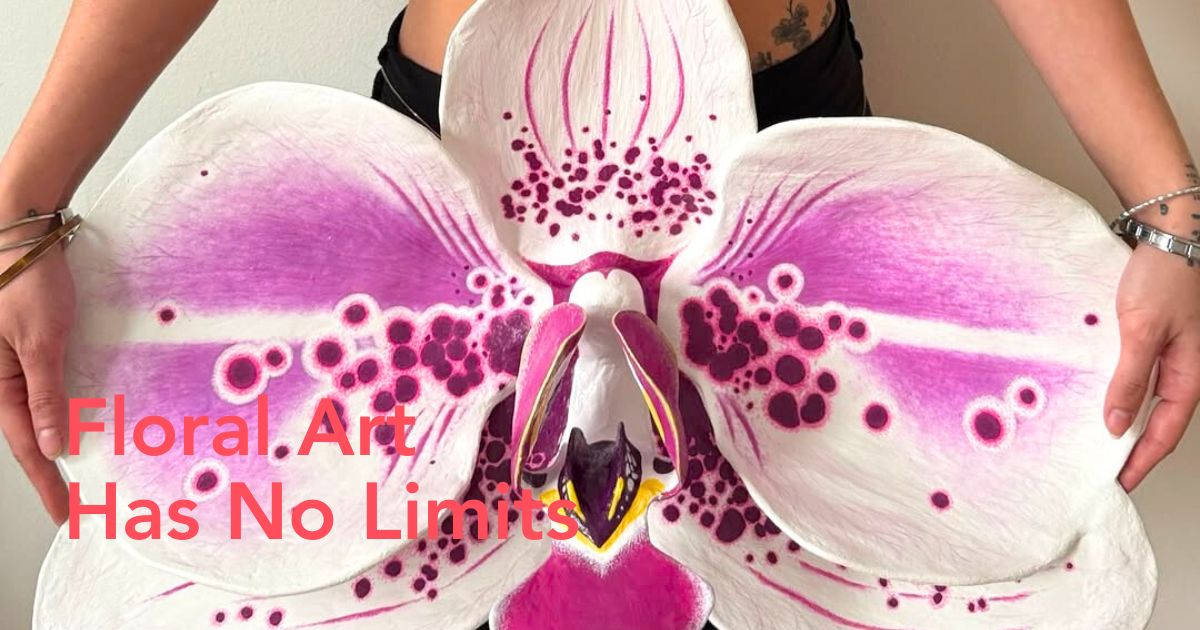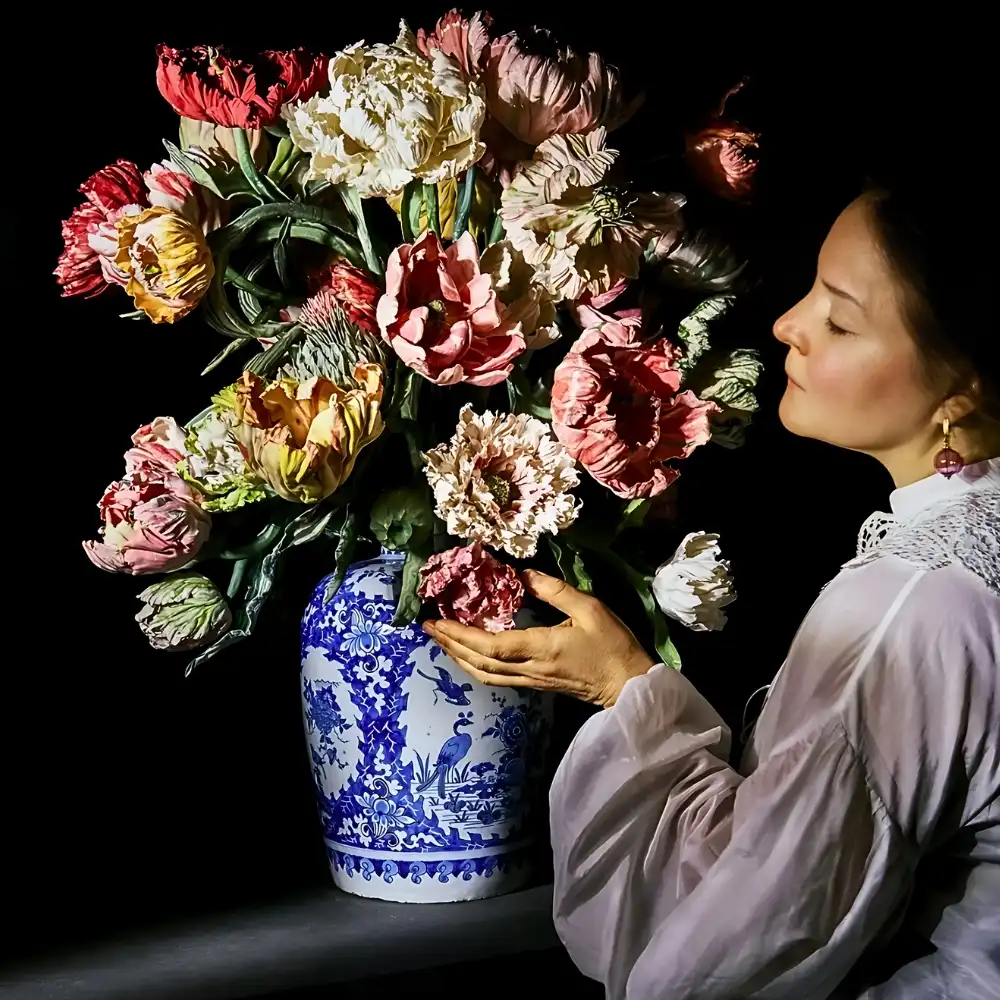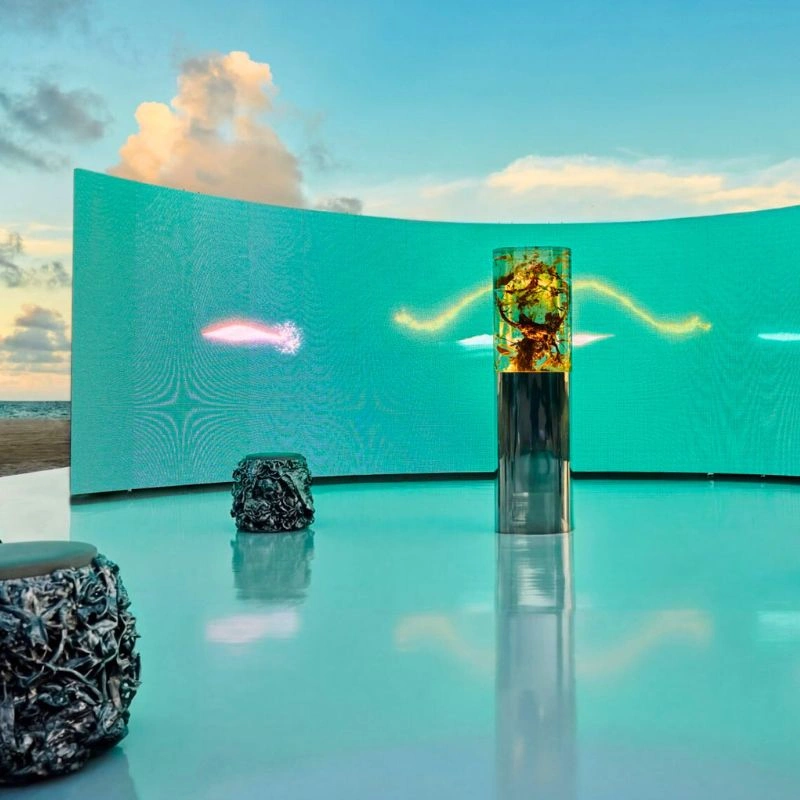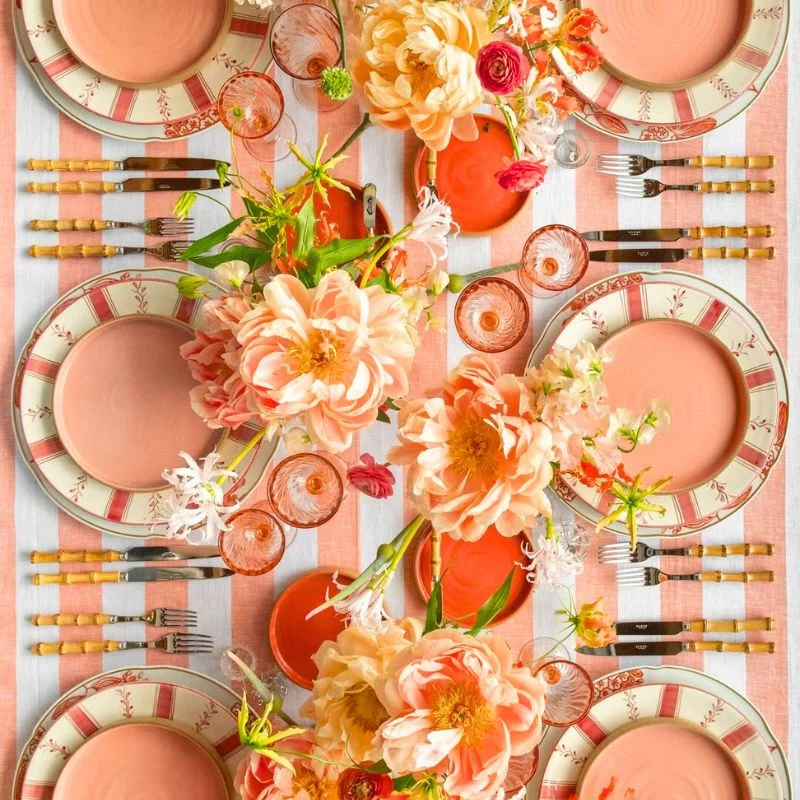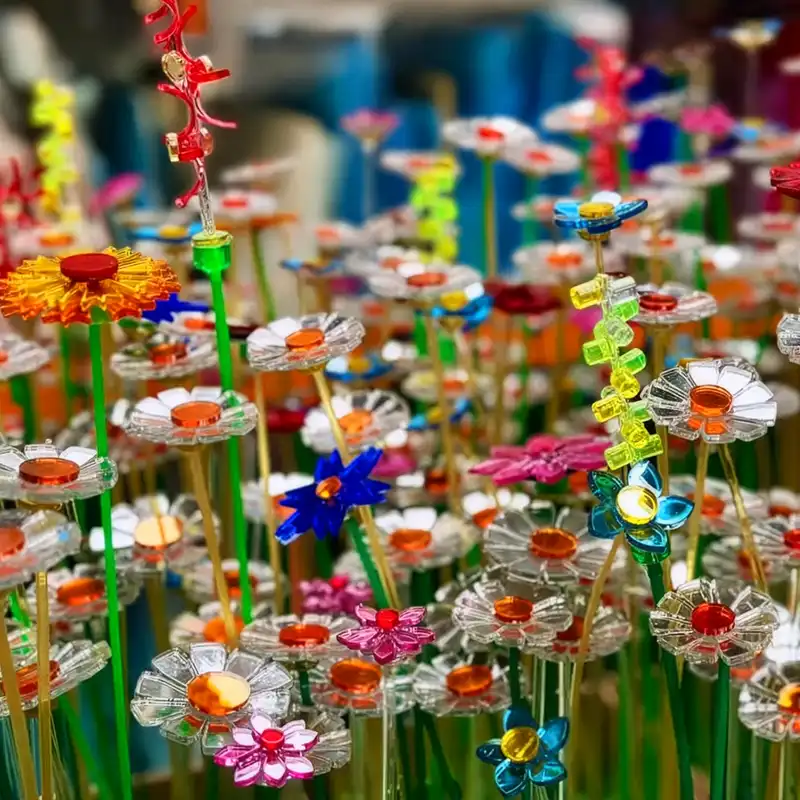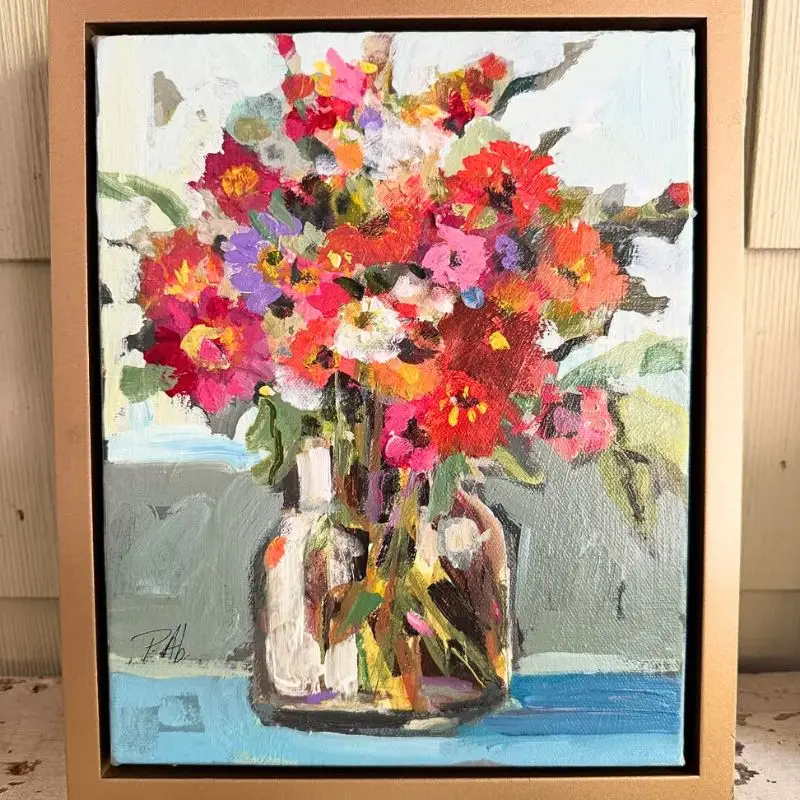Fleureternele creates detailed sculptures of flowers using ceramic as her medium. Her work begins with a close study of real plants, paying attention to the scale, proportions, and growth patterns of petals, leaves, and stems. Each piece is shaped by hand, with clay manipulated into fine components that replicate the structure of the original specimen.
Marie Eve – Creator of Fleureternele and Precious Floral Ceramics
The starting point for Marie Eve, creator of these floral sculptures, is always the flower itself. Each project begins with a detailed examination. The way a stem bends under its own weight, how the edge of a petal curls as it dries, or how color shifts across the surface of a flower. Instead of translating these impressions loosely, Fleureternele works to capture exact proportions and rhythms.
The method is not symbolic or abstract—it is analytical. Clay becomes the main material through which botanical structure is reconstructed, piece by piece, until the sculpture reflects both the complexity and the balance of the original plant.
The making of a beautiful ceramic orchid
The process is labor-intensive. Individual petals and leaves are hand-shaped, often requiring support structures during the drying phase so that gravity does not distort them. Clay bodies are always chosen with intention. Porcelain, when translucency or delicacy is needed, and stoneware, when strength and density are required. Once formed, the sculptures are dried slowly under controlled conditions. This careful pace reduces the risk of cracks or warping, an important consideration when dealing with the fine and irregular shapes of floral components.
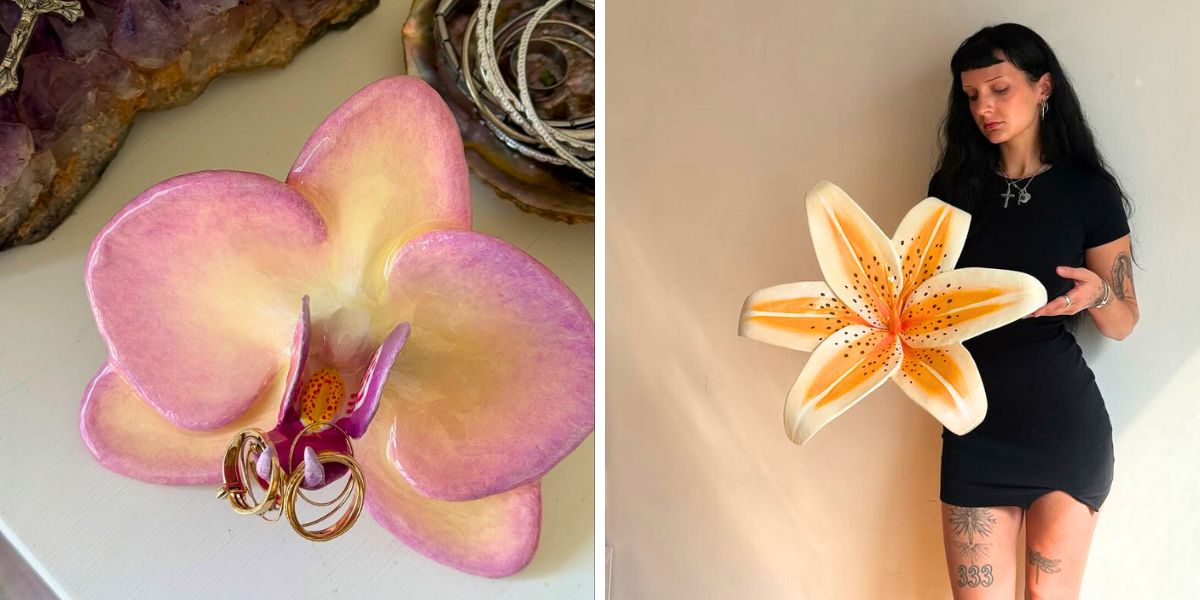
Once dry, the sculptures go through bisque firing, which strengthens the clay while still allowing surface work. Glazing and finishing treatments are applied carefully and with restraint. The goal is to achieve realistic textures in matte finishes for petals, subtle gloss on certain leaf surfaces, and color that reflects natural tones. These surface decisions are grounded in observation, aiming for accuracy instead of stylization.
Inspired by the dew on the artist's early walks
Choosing Flowers for the Sculptures
Some of the artist's works concentrate on a single flower, highlighting details that might be overlooked in a natural setting. Others are assembled as larger structures composed of many ceramic flowers. In these cases, each part is created and fired separately before being joined, allowing for complex compositions that remain technically stable.

The choice of ceramic introduces permanence to botanical subjects that would normally fade quickly. Once fired, the sculptures are durable, able to exist in settings for a prolonged period of time. This way, you can have the presence and shapes of flowers surrounding you for years. This gives them applications in both artistic and design contexts, from gallery exhibitions to interior environments that require lasting forms.
Marie's approach positions botanical study and material knowledge at the center of the work. The emphasis is on precision and the process of shaping, drying, firing, and finishing. The sculptures hold visual qualities of natural flowers, but the medium changes how they exist. They are studied objects, constructed with the intention of keeping their form intact over time.
Through this method, Fleureternele expands the role of flowers in contemporary practice. They are not temporary arrangements or consumable decorations. In ceramics, they are objects built to endure, presented for ongoing observation and integration into space. Each sculpture functions as a fixed record of botanical form, achieved through technical discipline and careful decision-making in clay.
Expanding the Role of Flowers in Contemporary Practice
Each sculpture is a documentation of botanical form, accomplished through meticulous clay decision-making and technical discipline. The intersection of plant life and material structure is a recurring theme in her portfolio. Hours of hand shaping, regulated drying, many firings, and sophisticated finishing methods are all evident in the piece.
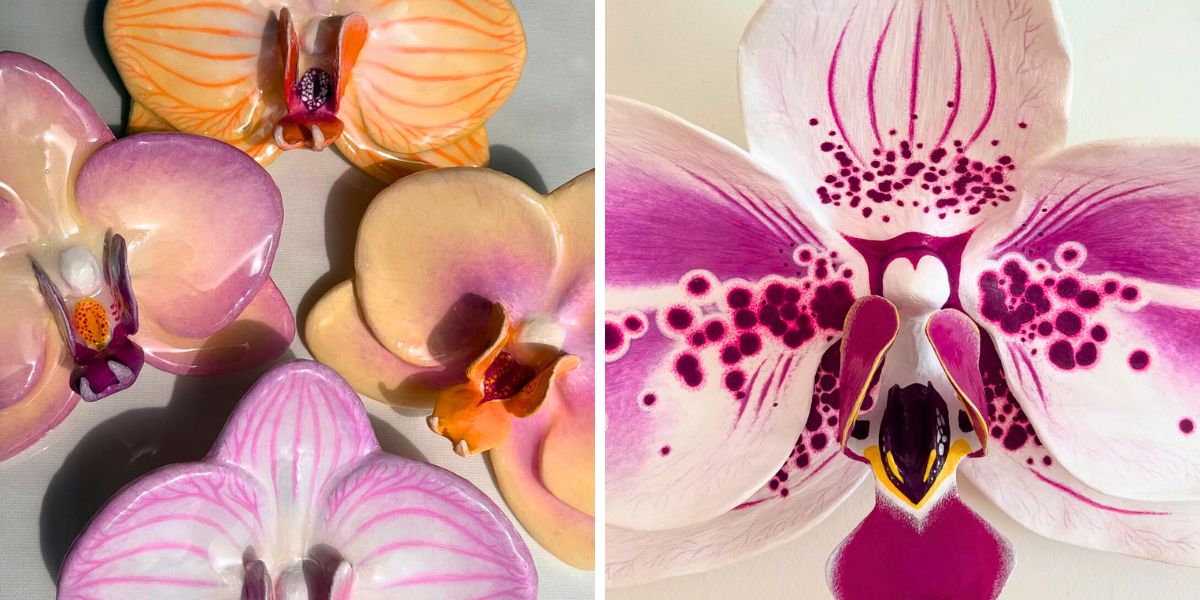
The artist creates sculptures that have the look of real flowers—characterized by stability and accuracy—by establishing the technique on observation and ceramic knowledge.
Photos by: @fleureternele.

